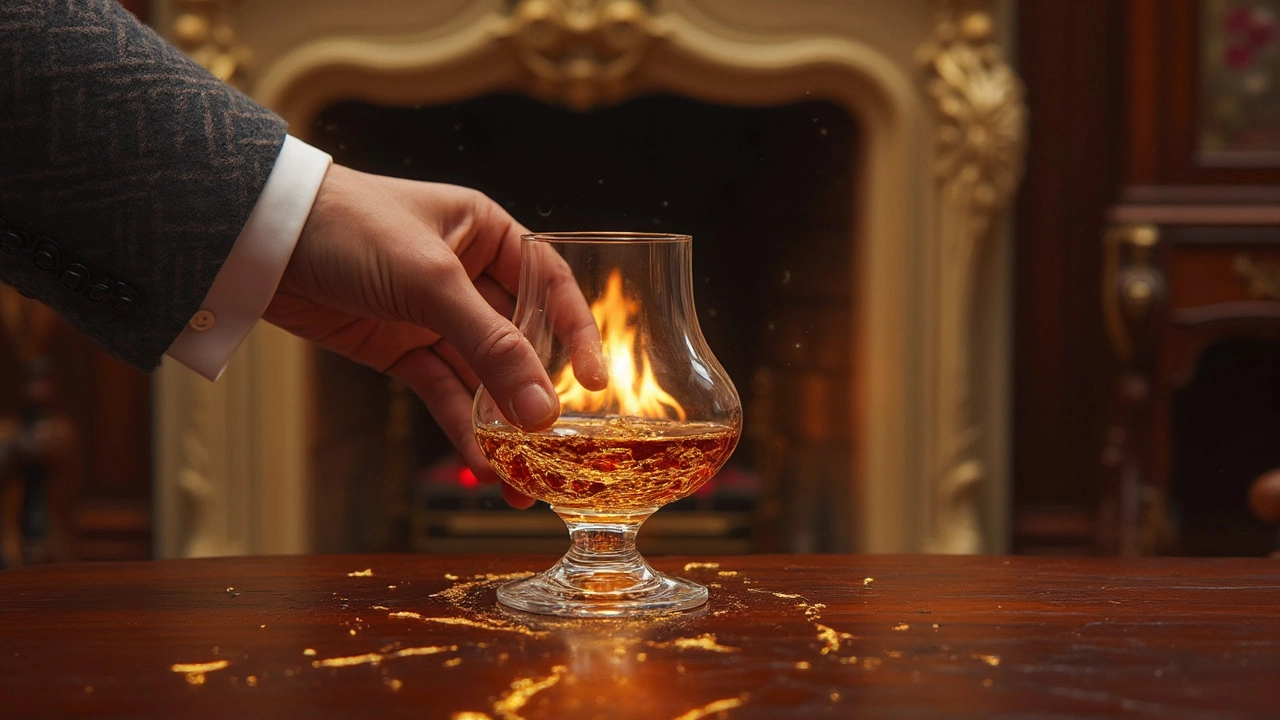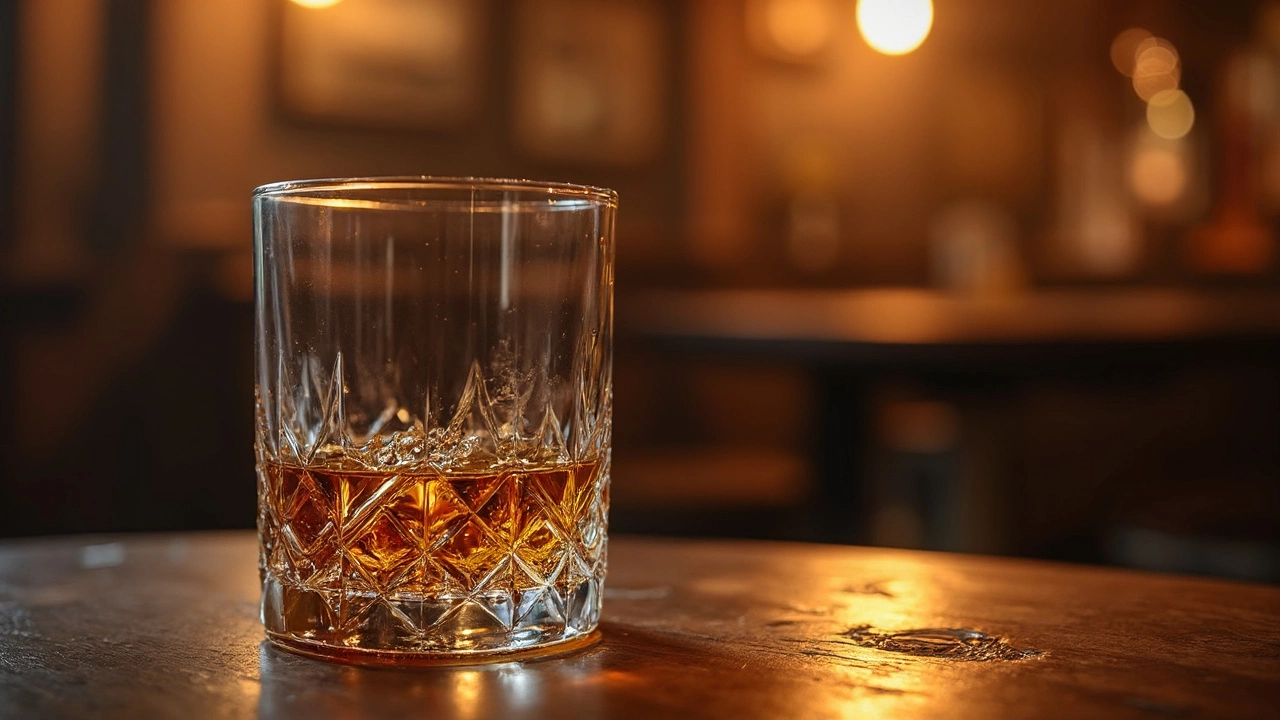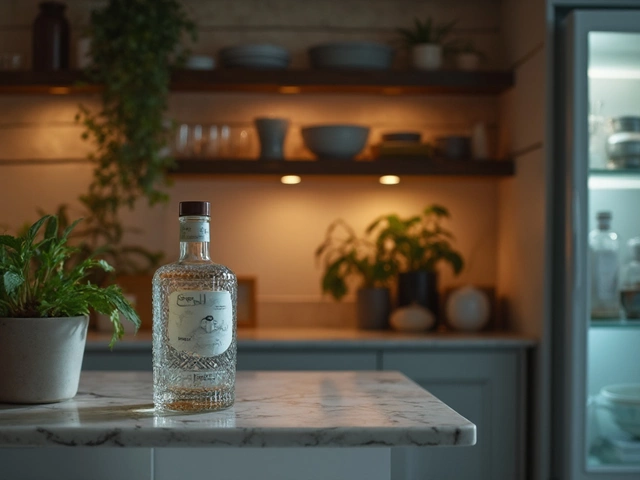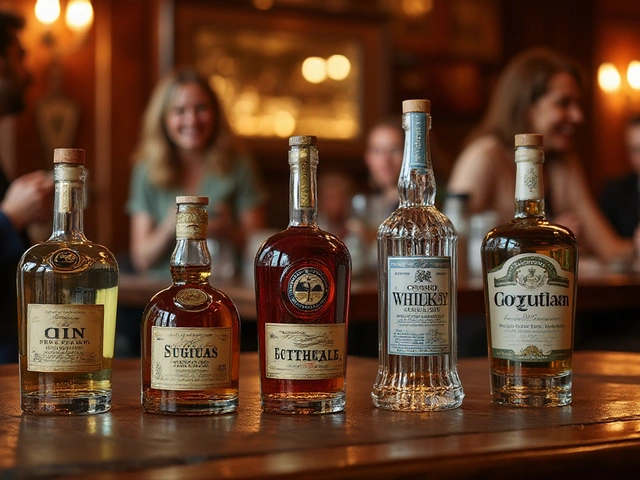Ever noticed those streaky lines that slowly form on the inside of your whiskey glass? Those are called whiskey legs, and they're like the secret language of your drink. Understanding them can boost your appreciation of the dram in your hand.
So, what exactly are they? Whiskey legs, sometimes known as 'tears' or 'fingers,' are the trails that form when you give your glass a gentle swirl. They might look pretty, but they’re not just decorative. They hold clues about what's nestled in your glass.
Here's a quick tip: the slower and thicker those legs, the more viscous your whiskey is likely to be. Thick legs can suggest higher sugar content or certain ingredients, which might guide your tasting notes. So next time you pour yourself a measure, take a moment to admire the legs before diving into those rich and complex flavors.
- What Are Whiskey Legs?
- Why Do Whiskey Legs Form?
- What Legs Say About Alcohol Content
- Viscosity and Its Indicators
- How to Properly Observe Whiskey Legs
- Tips for Enjoying Whiskey Tasting
What Are Whiskey Legs?
If you’re into whisky tasting, you’ve probably heard of whiskey legs. But what are they, exactly? Whiskey legs are those streaky trails that develop on the inside of a glass when you swirl your whiskey. While they might look like something that just happens, they’re actually pretty telling about the drink.
When you swirl a glass of whiskey, alcohol and water evaporate at different rates. This creates those legs or streaks as the liquid slides back down. The holy grail for a whiskey enthusiast is to understand what these legs say about their drink.
Why They Matter
You might wonder, why should you care about these whiskey legs? Simple. They can tell you about the drink’s alcohol content and viscosity, which affects the mouthfeel and taste. Think of them as little visual hints. For instance, thinner legs might indicate a higher alcohol content because alcohol evaporates faster than water.
Formation and Observation
The underlying science here is capillary action combined with surface tension. As the alcohol evaporates, it pulls more liquid up the glass, which eventually drips down, forming legs. These streaks are easier to observe in a tulip-shaped glass, which helps trap aromas while accentuating the legs. The fun part is trying to decode what they say about your whiskey.
Whiskey Legs vs. Tears
Yep, there’s a bit of semantics here. Some folks call them 'tears' instead of 'legs,' but both terms refer to the same phenomenon. It's one of those quirks that add to the whole charm of whisky tasting.
Having a bit of knowledge about whiskey legs can make the whole tasting process a lot more interesting. Next time you’re enjoying a pour, give it a whirl and try to read the story those legs are telling.
Why Do Whiskey Legs Form?
The formation of whiskey legs is a little chemistry magic in your glass. It's all about the balance between alcohol and water, and a neat phenomenon called the Gibbs-Marangoni Effect. Sounds fancy, but it's pretty straightforward.
When you swirl your whiskey, the alcohol evaporates faster than the water. As the alcohol on the glass surface moves upwards, it pulls along the water, leaving those signature legs streaking down. Essentially, it's a tug-of-war between alcohol and water where alcohol tries to leave the scene, and water lags behind because it’s heavier.
The Gibbs-Marangoni Effect
Here's the sciencey bit. This effect describes how liquids with different surface tensions interact. Since alcohol evaporates quickly and changes the surface tension of the liquid, the water, with its higher tension, is left to march slowly down the glass.
Fun fact: this same principle explains how soap bubbles form or why tears stream in sheets on a car window when it rains. It's physics working its behind-the-scenes magic during your whiskey tasting session!
Factors Influencing Whiskey Legs
Besides the alcohol-water balance, there are a couple of other things at play:
- Temperature: Warmer whiskey leads to faster evaporation, affecting how the legs appear.
- Glass Shape: The curvature and size can impact how the liquid spreads and evaporates.
- Pour Amount: A bigger pour may create more prominent legs as the evaporative surface increases.
So next time you enjoy a dram, give it a swirl and watch the legs. They're not just decoration—they're nature’s chemistry show, giving you a sneak peek into the drink's character.
What Legs Say About Alcohol Content
Checking out your whiskey's legs isn’t just some fancy trick to impress friends. It actually tells you something about the whiskey’s characteristics. Those streaky lines on the glass aren’t just for show; they can hint at how much alcohol is in your drink.
Alcohol Content and Its Impact on Legs
Here's the thing: alcohol and water evaporate at different rates. When you swirl your whiskey, the alcohol climbs up the glass and evaporates faster than the water. This helps create those legs. If you notice thick, slow-moving legs, it might indicate higher alcohol content. Why? Because whiskey with more alcohol tends to have thicker legs, thanks to its interaction with water and other components in the liquid.
But there are other factors at play. The mix of alcohol and minerals can also affect how fast and thin the legs appear. So, don’t just assume high viscosity means high alcohol. It’s a part of the whole picture.
Reading the Legs
Alright, time for some detective work. Tilt the glass and twirl it gently. Look closely at the first streaks that form. Are they thin and quick? That could mean lower alcohol. Thicker and slower legs might mean you’ve got a stronger, higher-proof whiskey on your hands.
As you get the hang of recognizing these differences, it's like gaining a sixth sense for guessing a whiskey's alcohol content without needing to peek at the label.
| Observation | Possible Indication |
|---|---|
| Thick, Slow Legs | Higher Alcohol Content |
| Thin, Quick Legs | Lower Alcohol Content |
Experimenting with Your Glencairn
Want to test this out? It's easy. Next time you pour a whiskey with known alcohol levels, see if the legs match up to what we've discussed. Compare a 40% ABV whiskey to one that's around 60% ABV, and watch how the legs differ. You’ll start seeing the pattern in no time.
Remember, whiskey isn't just about drinking; it’s about experiencing. Recognizing what the legs say can add a whole new level to that experience.

Viscosity and Its Indicators
So, let's talk viscosity. It's one of those terms that might sound a bit technical, but it’s super important when you're tasting whiskey. Viscosity refers to the thickness or the flow of a liquid, and it tells you a lot about your dram. Think of it as the texture of the whiskey, something you actually feel as you sip.
A high-viscosity whiskey tends to linger on your palate, offering a more mouth-coating experience. This can make the flavors seem richer and more robust. How do you spot it? When you swirl the whiskey in the glass, and those whiskey legs trickle down slowly, you’re facing a more viscous liquid.
Why Thickness Matters
Believe it or not, viscosity can indicate a whiskey's age and its alcohol content. Older whiskeys often boast a thicker texture due to the breakdown of certain compounds over time. These compounds, oddly enough, are what create a silky mouthfeel.
If you’re diving deeper into whiskey tasting, pay attention to these indicators:
- Temperature: A warmer whiskey generally appears less viscous because heat thins the liquid.
- Age: Older whiskeys often have more complex and thicker legs.
- ABV (Alcohol by Volume): Higher alcohol content can create thinner legs, but this isn’t a hard rule.
The Science Behind It
Alright, maybe just a sprinkle of science here. The formation and behavior of whiskey legs involve a phenomenon called the Gibbs-Marangoni effect. It’s got to do with surface tension and evaporation rates, and it explains why those streaks form the way they do.
Even though it might sound complicated, you don’t need a chemistry degree to appreciate it. Just know that the legs reflect the interaction between alcohol and water in your glass, revealing the consistency and texture that make each whiskey unique.
Next time you pour yourself a glass, spend a moment to admire those legs. They’ll not only tell you about its viscosity but also wrap up a story about the whiskey’s journey from cask to glass.
How to Properly Observe Whiskey Legs
Ready to dive into your whiskey? Before you do, let's take a closer look at those whiskey legs. Observing them the right way can add depth to your tasting ritual. It's not just about swirling; it's more like a mini science experiment with your glass as the laboratory.
Step-by-Step Guide
- First, pour your whiskey into a clean glass. A tulip-shaped glass works best because it supports both swirling and aroma concentration.
- Hold the glass up at eye level to observe the color and clarity.
- Gently swirl the glass in a circular motion. This helps coat the glass with the whiskey.
- After swirling, stop and wait a few seconds. Watch how the liquid forms into legs.
- Note the thickness and speed of the legs. Slower, thicker legs often suggest higher sugar or alcohol content.
According to John Hansell, the founder of the Whisky Advocate, "The legs of a whiskey can reflect its viscosity, often hinting at its richness and oiliness." So, taking a moment to appreciate them can actually give you a heads-up on what you’re about to sip.
What to Look For
Ever wondered what those slow-moving whiskey characteristics tell you? Here's a quick checklist:
- Thickness: Thick legs might point to a richer whiskey, possibly aged longer, bursting with concentrated flavors.
- Speed: If the legs move slowly, it often indicates a full-bodied spirit. Fast-moving legs might suggest a lighter whiskey.
| Leg Characteristic | What It Suggests |
|---|---|
| Thick, Slow Legs | Higher Sugar and Alcohol Content |
| Thin, Fast Legs | Lighter Body, Lower Alcohol |
Next time you pour a glass, remember that those whiskey legs can give you a sneak peek into what's in store for your taste buds. Enjoy the anticipation and sip thoughtfully!
Tips for Enjoying Whiskey Tasting
Diving into the world of whiskey tasting can feel a bit like peeling layers off an onion—each sip reveals something new. There’s a lot more to it than just knocking back a glass, so let’s make sure you get the most out of your experience.
Start with the Right Glassware
Glasses matter more than you might think. A tulip-shaped glass, like a Glencairn, can concentrate the aromas, making it easier to pick out those subtle notes that make each whiskey unique. Keeping a few of these on hand is a solid start.
Take Your Time
Rushing through a whisky tasting is like fast-forwarding through a good movie. Give your dram a little breathing room, literally. Let it sit for a bit after pouring. This allows the aromas to develop, giving you a fuller experience when you finally take a sniff. As whiskey expert Jim Murray says,
“The first taste is for the mouth, the second is for the glass.”
Use Your Senses
Whiskey tasting isn’t just about taste; it’s a full sensory event. Take a good look at the color and clarity, then give it a swirl and watch the whiskey legs form. Smell it with an open mind—sometimes the scent can surprise you with unexpected notes like citrus or spice.
Add a Splash of Water
If the alcohol seems too harsh on the first sip, feel free to add a tiny splash of water. It can open up the flavors and make them more accessible. Don’t worry, purists agree that this can enhance your tasting experience.
Take Notes
Consider jotting down what you notice about each whiskey. Was it smoky, sweet, or fruity? Making notes helps you remember what you liked and didn’t like, and over time, you'll see patterns in your preferences.
Whether you’re tasting with friends or solo, the key is to enjoy the process. There's no right or wrong way to appreciate your whiskey, so go at your own pace and savor each moment. Cheers to a delightful journey of flavors!


